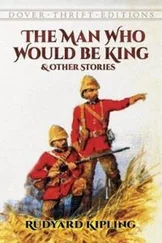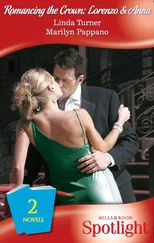It may seem surprising that Frances maintained her closeness to Mary despite their religious differences. It was usual, however, for court women to keep open channels of communication between warring parties and sustain friendships across political and religious divisions. William Cecil’s fiercely evangelical sister-in-law, Anne Cooke, would serve in Mary’s household a few years later. Frances was simply performing a family duty in maintaining a good relationship with the heir to the throne. The cordial visits Frances and her daughters made to Beaulieu were, however, about to become more difficult. Three days after the Greys’ arrival at Beaulieu, the question of whether Warwick was going to base his regime with the religious conservatives was answered resolutely in the negative with Dorset’s appointment to the Privy Council. As the imperial ambassador observed, Dorset was ‘entirely won over to the new sect’. The most ‘forward’ of the evangelicals rejoiced at his success. 10 But for Mary his appointment spelled real danger. Dorset’s ambitions for his daughter, Jane, were matched, or even exceeded, by his enthusiasm for religious reform. The rediscovery of the New Testament through Greek seemed to the evangelicals to mark the beginning of the breaking of a code through which Satan’s puppets in the Vatican had kept religious Truth hidden. Nothing could be more important to Dorset than overthrowing ‘the vain traditions of men’ expressed through the Church’s teaching, in favour of what God willed, as revealed through his Word - and Mary presented an obstacle.
Within weeks of Dorset’s promotion, remaining conservatives on the Council were expelled and the imperial ambassador was expressing fears for Mary. Dorset, Northampton and Herbert were the dominant figures in Warwick’s ‘crew’, he said, and all were men who would ‘never permit the Lady Mary to live in peace…in order to exterminate [the Catholic] religion’. 11 Mary would eventually be driven out of England, he believed, forced to change her faith, or even killed. While the political situation remained unsettled the Grey sisters continued to come and go from their father’s houses in London and Leicestershire to his half-brother’s house in Essex. On 2nd December, Katherine and Mary returned to Tilty, arriving with their attendants and ‘a great many gentlemen’. Katherine, in particular, was a light-hearted girl who enjoyed such parties, and little Mary Grey took her cue from her older sister in this regard. But the more serious Jane also joined them at Tilty, on 16th December, with her parents and uncle, Lord John Grey.
The family enjoyed a huge party at Tilty on Christmas Day and further celebrations on the 26th and 27th. The plays and festivities continued until almost the end of January 1550, broken only by a visit Katherine made to the sisters’ sole surviving aunt, Elizabeth, the widow of Lord Audley, at nearby Walden Abbey. Lady Audley’s only child, Margaret Audley, was a playmate, and also being raised as an evangelical. 12 There were no further journeys recorded to see the Princess Mary at Beaulieu that month. But it is probable the princess continued occasionally to welcome Frances and her daughters in the troubled years ahead. The cousins knew how quickly things could change in politics, and that the time could come when they might need the help of the other.
By February 1550, as the immediate political situation stabilised, the Grey sisters were settled at Dorset House on the Strand with their Willoughby cousins. For their father the rewards of office were already proving plentiful. Over the previous month he had been made Steward of the King’s Honours and Constable of Leicester Castle, as well as being granted lands, lordships and manors in Leicestershire, Rutland, Warwickshire, Nottinghamshire, and the Duchy of Lancaster. 13 This vast increase in wealth ensured his wife and children could afford the finest new gowns for court functions where he was in daily attendance on the King.
Edward’s day was a busy one. He rose early and was dressed by his four Gentlemen of the Privy Chamber, who remained on their knees throughout. He then enjoyed some exercise: ball games, dancing, riding, shooting the bow or other sports. Breakfast was followed by a morning prayer, and then two hours’ tuition in Greek or Latin. Before and after lunch there could be meetings with Councillors. He would then have a lute lesson, an hour of French and then further Latin or Greek, before taking some more physical exercise and entertainments, dinner and bed, with all its attendant rituals. But around the routines of this isolated royal schoolboy, the court had the feeling of an armed camp.
Warwick was extremely security-conscious. A new contingent of guardsmen and armed yeomen had been attached to the King’s Privy Chamber, as well as twelve bands of cavalry, of which Dorset commanded a hundred horse. * Access to Edward was also severely restricted. Nothing could be presented to him that had not been approved by the Council and his tutors first. For the Grey sisters, however, conversation with Edward was easier to achieve than for most. Not only was their father constantly at Edward’s side, nearly all the King’s personal servants were either family friends or relations, or the clients of those who were. Catherine Parr’s brother, the Marquess of Northampton, was close at hand as Lord Chamberlain, and his brother-in-law, Sir William Herbert, as Edward’s Master of the Horse. Northampton’s cousin, Nicholas Throckmorton (who had shouted in support of Anne Askew as she was burned), was Edward’s favourite Gentleman of the Privy Chamber, one of the four men who dressed Edward each morning, and played games and sports with him. But the figure who dominated the court was the new Lord President, John Dudley, the Earl of Warwick.
The Lord President, who would play a key role in Lady Jane Grey’s future, was a towering figure, albeit one who had emerged from the shadow of the scaffold. His father, Edmund Dudley, had been a faithful servant to Henry VII and a brilliant lawyer. On his master’s behalf he had squeezed the rich of their wealth until the pips squeaked. But when the first Tudor king died, the new monarch, the eighteen-year-old Henry VIII, had disassociated himself from his father’s unpopular policies. The young John Dudley saw his father set up on charges of treason and executed as a royal public relations exercise. It had made him a cautious man, as well as a ruthless one. People found Warwick physically intimidating, the sense of the soldier’s brute power all the more terrifying because he was so unusually controlled. He watched and waited before he made his moves and it was said that he ‘had such a head that he seldom went about anything, but he conceived first three or four purposes beforehand’. 14
It wasn’t long before Jane discovered that Warwick had plans for her. He was keen to avoid the mistakes of the Protectorship. That meant treating Edward as a maturing monarch, training him for a gradual introduction into matters of state, while also involving fellow Privy Councillors in important decision-making. Warwick even hoped to work again with Somerset, who was released from the Tower that month, in February, and invited to rejoin the Privy Council in May. It seemed to Warwick, however, that the best way to bind the new allies was the traditional means of inter-family marriages. Somerset agreed, and the marriages he most wanted for his children were with members of the Grey family. Just as Thomas Sudeley had suspected, Somerset wanted Jane for his son, the young Earl of Hertford. Through his mother Hertford was descended from Edward III. This did not give him any noteworthy claim to the throne, but his smidgen of royal blood raised his rank and made him a suitable match for Jane. Somerset asked also that his elder daughter Anne be married to Jane’s fourteen-year-old uncle, Henry Brandon, the Duke of Suffolk, who was being educated alongside the King.
Читать дальше












